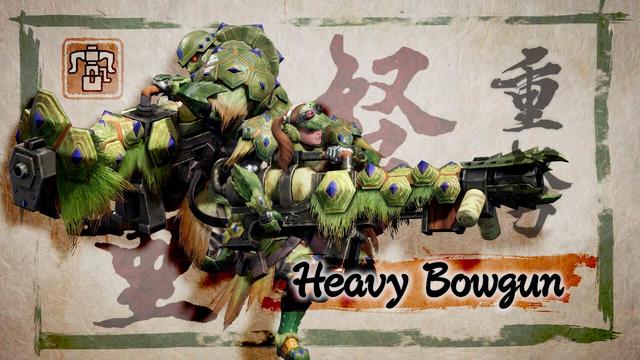Return to the Deza region
“The arduous students of Pythagoras knew it: the stars and men return cyclically;” Jorge Luis Borges, The cyclical night.
The region of Deza is located in the north of the Province of Pontevedra, owes its name to the homonymous river and is made up of the municipalities of Silleda, Villa de Cruces, Golada, Rodeiro, Dozón and Lalín, the latter being both the capital of the region.
Dozon
Being born in one of them, (Dozón) and returning with the cyclical rhythm that Borges speaks of forces me to look with the eyes of someone who is absent from the presence, who returns each time knowing that he will have to leave… like the first time.
Dozón is one of the smallest town halls; its mayor, Adolfo Campos Vázquez, is young, predisposed and trained for a broad analysis of the problems that go beyond the region itself. “A mayor is elected, in these small places, by the link with the neighbors, he usually exceeds the political group for which he is proposed. He weighs more the person than the party acronym ”. In his case, he assumed the position by line of succession and will ratify, or not, when elections are called.
Adolfo Campos Vázquez, Mayor of Dozón
“The most important thing is that I am satisfied with what I do and that what I decide, distribute resources based on the needs of the inhabitants, knowing that everyone is never satisfied, is consistent with the awareness of having done so based on my convictions. and function possibilities.
“Emigration in Dozón, as in all of Galicia, is a continuous present. My own paternal family went mostly to Argentina and Venezuela. Almost everyone came back, including my father, the previous mayor. I never had the opportunity to travel to Buenos Aires, but it is a project that I consider a priority for the future. Galicia cannot be understood without knowing the outside, the one that emigrated in its time and spread its name and its culture.
Mosteiro de San Pedro de Vilanova, in Dozón
Currently, Spain in general and Galicia in particular, has reversed the phenomenon of the outgoing population and has become a recipient. Although I think that today people live differently, since the distance is felt less, the world is more globalized. That reduces the borders and also the emotional ones. In fact, there are people who integrate into new societies more easily”.
To my question about the main problems that arise, the axes to be solved and the projects and vision of the future for his council, he answers me with a panorama that includes, as a plan on which to project the regional drawing, Galicia as a whole , since it is clear that its position and attributions are not of competence to define the great policies, but to focus on the needs of the population that inhabits it.
This leads him to understand that: “Galicia, from the economic, demographic and social point of view, we can characterize it as a dual society, in which a more developed axis stands out, the Atlantic, which includes Coruña, Santiago and Vigo, to mention salient points. Coruña with industrial development, Vigo based on the shipping activity and the automotive industry with its subsidiaries. Santiago de Compostela, with an activity centered on its universal religious and cultural icon, the Cathedral, which from the year 1993, with the Xacobeo year, acquired a tourist boom that has not stopped. The dissemination of the Camino de Santiago is a momentous event in this regard. In addition, Santiago has the material and immaterial infrastructure of the public administration. As for tourism, the Rías Baixas also have a strong attraction, especially in the summer season.
Carballo Negral from Sanguiñedo, in Dozón
The other axis, the one with the least economic and demographic development, is inland Galicia, where we find ourselves. The main activity is agriculture and livestock. A serious drawback is the population issue, due to scarcity and aging, generated by the low birth rate, and the expulsion of young people to other areas, even within Galicia, they are attracted by the urban and developed by the type of work activities that can exercise.
On the other hand, the positive part is the life expectancy that is constantly increasing and speaks of the quality of life in our elders. But this does not solve the fact that the requests for the childhood school are minimal and instead, services are required for the elderly in the various aspects to be attended. This situation cannot be resolved from the council and, I think, it exceeds even major policies. It is a European issue in general, and with deeper edges in our region.
Added to this is the issue of unproductive territory, for the reasons that have been mentioned, to which is added the system of smallholdings characteristic of the area, and the amount of unused land. This has a significant social and economic cost and is a process, in my opinion, unstoppable and that will deepen.
The primary livestock sector is the one that feeds the secondary and tertiary sectors. Is the base. Livestock exploitation subsists, partly because of the subsidies that have the objective, precisely, of maintaining their location. There is a lack of labor, despite the fact that the demand for jobs in these farms and companies is small, in general they are covered by immigrants. which is a vicious circle that feeds on itself.”
I note that he has a less than optimistic view of the future, to which he replies that he considers himself realistic.
Old Mill in Riazó. Dozon
“Galicia is 7% of Spain in all parameters, it has its own evolutionary dynamics that is the process that all developed societies have undergone. Immigration covers the jobs that the natives no longer choose, this happened in all countries, it was our emigration process that nurtured the demand of Argentina and Venezuela at the time and then those of the European nations in the expansion of the post second war .”
The conversation turns to his activity as a professor at the University, an analysis of education in general, but shortly we will return to the Deza.

“This region is an island within what would be a moorland, it is of a medium level of development due to its communication and geographical position. Demographically, there is a lack of young people and trained labor for the activities of the place. A training and employment workshop for gardening and forestry has been opened, but they hardly managed to cover the twenty places, even adding the neighboring municipalities.
City Hall of Dozon
Within the government structure, the councils must focus on basic services and communications, maintaining the roads and improving the infrastructure. For this, it is essential to listen to the neighbors who seek to tell their problems and that, in some way, they are given a solution, which may or may not be feasible. At this time one of the basic objectives is the environmental issue, we work a lot with almost unexpected achievements, the issue of waste selection for future recycling, in line with the environmental policy proposed by the Ministry.
In the industrial area, we have a very well-equipped estate, which already has all the plots awarded for small industries. Regarding communications, we have 70 km of roads maintained in very good condition, fiber optics were installed that already reach half of the town hall, given that communication is not limited to roads, but today virtuality is essential.
Within the city council, it was possible to modernize the administrative structure from the technological point of view and the training of the personnel, this allows us to be better connected with the organisms of the Xunta and to manage the resources that we need.
In terms of education, there is a public school in which we are making investments, as well as in the repair of the town hall building, and in cultural matters, the restoration work of the Monastery of San Pedro de Vilanova, a jewel of architecture of the twelfth century.
We are also working on the revitalization of the Da Gouxa fair, which has its origins in the Middle Ages and did not lose continuity, but it is necessary to improve the facilities and achieve greater recognition of its value and give it tourist interest to enhance its intangible heritage. .
We have great natural wealth in routes and trails and mills, such as the Sanguiñedo valley, the Peña de Francia and other places that connect with the crossroads of the Camino de Santiago.
At this point, and prior to saying goodbye, Adolfo Campos Vázquez defines his position: “We are managers of the everyday and the immediate, more than great politicians,
But the everyday is what worries the neighbor, and for that we are in this function.”
Silleda
I went to Silleda on a December morning that repeated the landscape and weather with which the month and my stay in Galicia had opened. The traffic was intense, for a moment I felt transported to some artery of Buenos Aires. Traffic lights, trucks, cars… crossing the road under the umbrella and with the mask on had some unexpected emotion and risk.
Manuel Cuiña Fernández, mayor since 2013, received me accompanied by Mónica González Conde, his deputy mayor.
Manuel Cuiña, Mayor of Silleda, and Mónica González, Deputy Mayor
As expected, we started talking about emigration, about that issue that is always present in Galicia, even when it is not made explicit. However, as soon as the interlocutor approaches this topic, in all cases the experiences or memories of family experiences that marked the Galicians who did not emigrate personally arise.
“A ship was leaving with thousands of Galicians, some documented, others unknown, escaped… most of the people pushed by hunger, others, also, by political issues. One of my aunts had to emigrate when she was eighteen; They were ten brothers, without resources. It is that the older ones marched to help with their remittances to raise the little ones. From her She went to Argentina, for which I still have family there, from her side. She managed to return to her land three times.
Ponte Taboada, on the Deza river. It unites Lalín and Silleda, and is from medieval times
Super excited about a new customer -> I'll be presenting to their teams in July on: “How to Be Successful in Your… https://t.co/CwgAljQibG
— Lauren Cooney✨ Tue Jun 08 16:57:57 +0000 2021
A few years ago I traveled to Buenos Aires, which I hope to be able to repeat when the pandemic issue allows it; there I was able to verify the love for the land that is lived and breathed. It is that no one leaves their place, with definitive intention, on a whim or curiosity. At that time it was to leave and not return. No one thought that he could retrace the path of the sea.
After the 1960s, emigration was directed towards some European countries. It was thus that my father went to France, where he remained working for a few years, with few visits to see his children grown up. It is that in this part of the region there was only the possibility of going to work on the railroad tracks that were being installed from Orense to Santiago.
Carboeiro Monastery
A concern led us to reflect on those who did not tell the story of their emigration or made up for it so as not to mention the harsh conditions of their land of origin. Manuel Cuiña expresses, clarifying that it is a subjective position:
“Those who left and weren't very lucky may have tried to give an image that they were fine, to sustain their own self-esteem. That is why some impressions or stories of emigrants and family do not respond to reality but to what was wanted to be transmitted, for whatever reason.
“Today social networks bring us very close. I still remember that it was not until the 1970s that a relative installed the telephone and once a month or every two months we met at his house to receive calls from those who were abroad. That short conversation was an impact, because it was very expensive and technically difficult. Since I was a child, I did not participate, but I attended and I still remember the emotion that was experienced in those days”.
The past had enveloped us in its cloud of homesickness, but the current reality and the projection of the future was the main reason for the interview and we returned to that objective.
I then ask him what the main driver of Silleda's economic activity is, since when I arrived I noticed an atmosphere of movement and prosperity that I wanted to contrast with his words.
“In the assets we have in the first place livestock and agriculture, like a large part of inland Galicia, that is our base. In fact, we are the main producer of milk in the region, but the industry is also a fundamental element of the economy. In our Polígono there is no free plot left, they have all been bought. The main company in terms of turnover in the region is Silleda, dedicated to feed, that is, balanced feed for cattle and pig farms and in general for everything that is raised on them.
The industrial sector is more than vital, fueled by the so-called "Green Week", in which an exhibition of products of all kinds and throughout Europe is held, whether livestock or machinery and a variety of products and services.
This is why our city council is the one with the lowest unemployment rate in the region and proudly displays the statistics that show that the loss of population has stopped and there is even a slow but progressive increase in it. Regarding the problems to which efforts must be addressed, he mentions professional training for trades, which would help retain youth employment and cover the demand for specific jobs.
Immigration, the opposite of those times of departure, is today frequent and comes from Eastern Europe or the Maghreb.
“And we already have Tourism as a present and future motor focus, that is, the third sector; in fact, it is Silleda that occupies the largest number of hotel beds. The exhibitions are an element of attraction although, on the other hand, there are many architectural and landscape attractions that have been valued and disseminated.”
Fervenza of the river Toxa, parish of Pazos, Silleda
For this part of the conversation, Manuel Cuiña chooses Mónica González Conde as the main spokesperson, who is the deputy mayor and also a "concelleira" for culture, tourism, sports and communication, not without first recalling that, "I take politics or love for my terra”, he said in Galician, a language that is used by the majority among his people, whom he knows very closely, “because I am a mayor with my feet on the ground, and on holidays I still make deliveries personally with the truck ”.
Mónica, the councilor for tourism, who has held the position since 2019, conveys the enthusiasm with which she faces her role and gives an account of the material and immaterial heritage they possess in a variety of items. The two music bands, Silleda's and Bandeira's, are artists who have individually stood out in this branch of art, such as José Antonio Fondevila. In the plastic arts, the renowned Manuel Colmeiro is the flagship of a group that is notorious, since the Deza region stands out for its quality and number, both in painting and sculpture. The theater is not alien to the concerns of those of its times. Silledenses, among the actresses Cristina Collazo stands out. And several rock groups that spring up among the youth that mix the folkloric with the rhythms. And a new generation of writers has emerged. For all this, the infrastructure offered by the municipality are the music schools, with 300 students, a dance school, two choirs, the Castelao library and the youth house.
The Baccalaureate Institute bears the name of the Painter Colmeiro and there are two public schools for infants and primary and one concerted that includes all levels.
"We have 33 parishes that cover 169 km2, so I can say that there are 33 motivations to see and visit." Her voice leads me to visit the churches, monasteries, natural landscapes, bridges, trails and I understand that Tourism, with the restoration of the architectural heritage of great archaeological wealth and the dissemination of these treasures, true jewels, as she calls them, has become a new growth engine.
-“With the pandemic, the idea of proximity travel and close to natural, rural life was favored. On the other hand, we have two of the routes of the traditional way of Santiago, the one of the Silver and the one of winter.
For the 2030 agenda we intend to continue sustainable development works, such as hiking trails”.
Carballeira de Trasfontao, on the Camino de Santiago. Silleda
The future is on the move, but yesterday is still present and Mónica is also linked to emigration: my great-grandfather went to Argentina and came back, and my grandparents to Venezuela, where they stayed for ten years. Through her mother's line, the destination was Buenos Aires, a city she met in 2001. “There I heard people speak in Galician, I was struck by the feeling of attachment of my family to their origins; She, moved, focuses on the importance of preserving traditions and gratitude to those emigrants who were the founders of Escuelas Laicas.
Lalin
This town hall is the largest in the region and is therefore its capital; As I get closer I see the signs announcing "Lalín camiña" and "Lalín Sabe" in reference to the importance of crossing two routes on the Camino de Santiago, the importance of hiking and its growth, as well as the vitality of the sector gastronomy, highlighted by the international stew fair, which takes place annually in February and is already heading for its 52nd version. The sausages, cheeses, honey and other delicacies from the area are the flavors that the posters announce.
Its mayor, José Crespo Iglesias, is an experienced man in office, which he has held since 1990, and knowledgeable about management, with projects and achievements that have contributed to the development of the place. He was the protagonist of a stage of dynamic growth of the city, which radically changed its appearance, generated numerous jobs in the textile sector. Simultaneously, the real estate sector had a boost that generated a construction boom materialized in the rapid and quality emergence of numerous buildings. The 2008 crisis was the break that affected both sectors, and José Crespo Iglesias was also the one who was at the forefront of it and in search of a reconversion that today is resolutely oriented towards the tourism and gastronomy sector, combined with agricultural and livestock production. characteristic of the region.
José Crespo Iglesias, mayor of Lalín
The recognition of its traditional Cooked Fair as the first considered to be of an international nature is a stimulus and a challenge that entails periodically reproducing this true festival abroad, which is much more than a culinary act. But for José Crespo the challenges are motivations that enhance his active and committed nature in the work of the municipality and in valuing his benefits and making known the potential that the Deza region contains.
The streets give an example of these activities, which are specified in the location of the zero km of Galicia that corresponds to Lalín, in the construction of a true Santa Claus village for the local children, in the lighting of the streets and the Church and in the continuous effort to provide it with elements that, while maintaining its traditions, provide the comfort that today's society requires.
Mayor Crespo also treasures a family experience related to emigration to Argentina, where he has relatives with whom he maintains a relationship. He has visited that country on several occasions, including motivated by the Lalín, A Golada and Silleda Center in Buenos Aires, which materialized the twinning of the cities of Chascomús and Lalín, linked by the roots of former president Raúl Alfonsín. Some acts are still pending, such as the milestone to be installed in Chascomús and the nomination of a street, subordinated to the possibility of traveling in times of pandemic.
Another aspect of interest that stands out is, from the cultural point of view, the dedication of the year of the Galician arts 2022 as the year of Laxeiro, José Otero Abeledo, a natural plastic artist from the place but who lived and did much of his work in Argentina, for which considers that the ideal would be to pool the tribute on both shores. Crespo Iglesias highly values his relationship with the Lalín Center in Buenos Aires, and considers that city the 52nd parish in the region.
Proud of his city, which with its more than 20,000 inhabitants spread over 328 km2, is the largest and the first city council in Pontevedra and occupies a pre-eminent place, he considers that it must be brought back into fashion, and for this the fair of the cooked, "it is an excellent pennant, which will lead us to generate jobs in direct or derived items."
Presentation of the Cooked Fair 2021
"The production of high-quality honey, as well as dairy derivatives (various cheeses and yogurts with distinctive characteristics), butcher and bakery products, are an identifying registered trademark."
“Lalín has a life of its own, he says, one of the most important primary livestock sector in Spain, with large farms and also agriculture linked to it, due to the production of corn that derives for the manufacture of livestock feed, and also linked both sectors with the national domestic market and with exports.
On the other hand we are on the Romanesque route, in the megalithic culture, more than 30 forts have been surveyed, that is to say, the landscape, the anthropological and archaeological heritage, the Churches and Pazos accompany us. Everything is ready, you just have to put it in value and spread it through the Provincial Council and Europe. This will generate wealth across the board.
Children's games, with the Monument to Loriga in the background. Lalin
Before leaving his office, I am interested in knowing your impression of the position: “I feel like a village mayor in a global project in which Lalín is immersed, and in which rural and urban areas are treated equally”.
From the outskirts, walking through the town hall square, remembering my roots, I walk away slowly while Borges's words become a precept: "I usually return to the eternal return."
Celia Otero Ledo, December 2021




